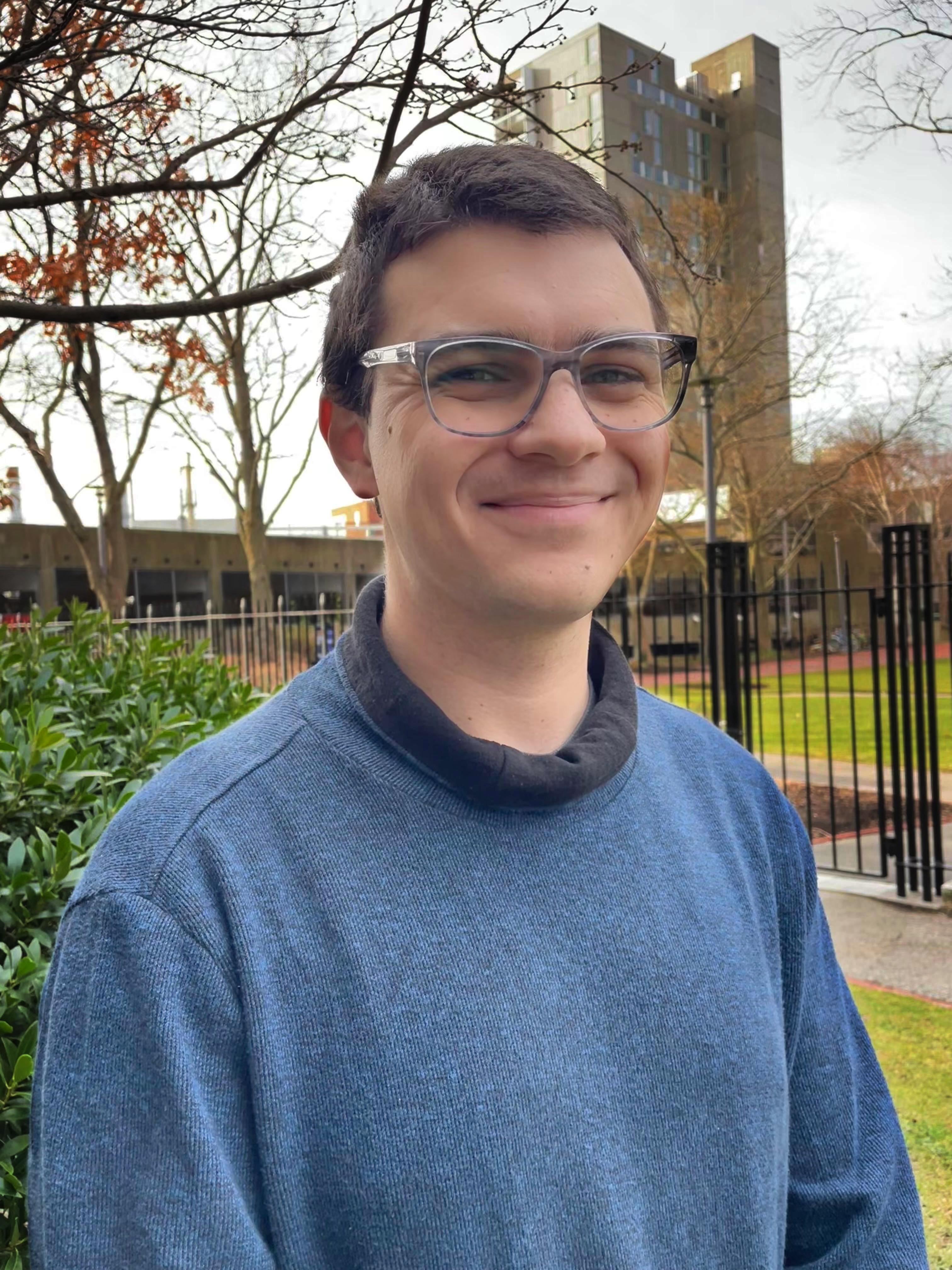The 2024 Student Presentation Award winner is Tori M. Vilches.

Top: Vilches. Bottom (left-to-right): Falotico, Saenz, Sugawara
The Student Presentation Award Committee is delighted to congratulate our 2024 award winner and honorable mentions.
Winner: Tori M. Vilches, "'Sex Sells': A Decolonial Analysis of Purplewashing and Sexual Narrative in the Women of Reggaeton”

Beneath the surface-level performance of feminism, autonomy, and empowerment in Reggaetón lies a perpetuation of misogynistic stereotypes that hyper-sexualize women and offer little in terms of agency (Díaz Ferndández, 2021). In fact, Reggaetón artists engage in performative inclusion by adapting their products to current social norms without altering their music or lyrics, profiting off the sexualization of women (Meave Ávila, 2023). Karol G and Young Miko appear to empower narratives of sexual freedom for women, with their musical performances acting as feminist commentary on the limits of women in the genre. While scholars have explored how Bad Bunny purplewashes his music (Hoban, 2021; Robles Murillo, 2021), there's been limited analysis of female artists regarding this topic. In this paper, I analyze how women are represented or sexualized in lyrics, visual cues, and vocal timbre to explore the nuances between feminism, sexuality, socio-cultural power dynamics, and purplewashing in a genre that is incredibly popular and influential today. As Mulvey (1973) points out, women’s appearances in film are heavily coded with eroticism and their bodies serve the purpose of engaging the heterosexual male gaze, all of which are heavily influenced by a society that values patriarchal power. Similarly, in order for women to be successful in male-dominated fields they must adhere to a male-dominated agenda (Davies, 2001). This paper acts as critical commentary on commodification of women’s bodies, exploring the notion that “sex sells.” Using a decolonial lens, I shed light on how colonial values of capitalism, sexuality, and women inflluence current artists in the genre. This highlights the gendered political climate of Reggaetón, emphasizing the dichotomy between sex-positive self empowerment and purplewashing for financial gain in a capitalist market.
Honorable Mentions
Sam Falotico, "'What’s in an OP?': Narrative, KonoSuba, and the 3/4 Prechorus"

An OP is the standard term for the opening song/credits of an anime series. They are accompanied with animation, highlighting the anime’s main characters, hinting at plot arcs, featuring the names of the studio staff, and showing the overall themes and tone of the show. Since OPs are typically under two-minutes in length, it can be difficult to create a tight musical-visual narrative between the song and animation, all while fulfilling the other essential elements of an introduction. As such, many OPs do not tell a complete story at all. However, there are some OPs that do, built on an intricate counterpoint between the musical and visual elements.
My paper explores this idea, using the opening to KonoSuba (S1) as an exemplar. The OP to KonoSuba not only features a clear musical-visual story, but the song’s prechorus temporarily switches meter to 3/4, creating a marked shift in both the music and visuals of the OP. As I shall argue, the musical and visual interactions in the OP to KonoSuba not only demonstrate one such way of storytelling in anime OPs, but also offer a unique perspective on structuring film introductions more broadly.
Juan Patricio Saenz, "Alfabeto, punto, and diapason: the guitar as an instrument of music theory in seventeenth-century Iberia"

This paper explains how the five-course guitar functioned as an “instrument of music theory” (Rehding 2016) in seventeenth-century Iberia. During this period, Iberian music theory was characterized by a great “theoretical rift” separating the writings produced by church musicians from those produced by secular musicians who were predominantly guitar players (Gallardo 2012). While the former group’s treatises emphasize “conservative” topics such as plainchant and modal theory, the latter group produced “progressive” works including some of the earliest theoretical conceptions of the triad as an independent entity, and some rules for the accompaniment of melodies anticipating some of the principles of bajo continuo.
Through the study of pedagogical texts by Amat (1596), Velasco (1640), Sanz (1674), and De Huete (1702) this paper explores several of their most original explicit and implicit theoretical ideas. These include the tenets of alfabeto notation, the theoretical emancipation of the triad through the punto concept, a rule-of-thumb system for the harmonic realization of a bassline, and highly refined understandings of tonal space and chordal inversion condensed in Velasco’s musical circles and Sanz’s laberinto.
This heterogenous group of composers/performers/theorists—possibly influenced by Cartesian rationalism—demonstrate a profound interest in sophisticated topographical representations of tonal space using figures of circles. Some of these figures are practical solutions to some of the necessities of their emerging theoretical systems such as early attempts at a generalized theory of transposition. Others are original examples of speculative theoretical constructs such as intervallic cycles, and prototypical scale harmonizations. Ultimately, these new geometries of tonal space anticipate other more celebrated circular representations (such as those by Johann David Heinichen and Johann Mattheson) by several decades and arguably demonstrate a rarely discussed form of transnational intellectual dialogue between the Iberian Peninsula and other European nations in matters of harmonic syntax at the turn of the eighteenth century.
Rina Sugawara, "Fantasy and Formenlehre in Imperial Japan"

The 1937 manifesto Kokutai no Hongi dictated the modern national mission: “to build up a new Japanese culture by adopting and sublimating Western cultures with our national entity as the basis, and to contribute spontaneously to the advancement of world culture” (Hall, ed. 1949, 183). Encapsulating the paradoxical joint projects of Japanism and Westernization, the text critiques “abstract thought” as the peril of “Western liberalism” and extols instead, “concrete creation” as a Japanese artistic practice—a distinction also found in musical discourse, which claimed composition in the realm of “creation” [創造/sōzō] rather than the homonymic “imagination” [想像/sōzō]. Curious, then, that a significant fraction of contemporary compositions were fantasy pieces, and that fantasy was theorized as one of three compositional types alongside the sonata and variation. Fantasy, to be clear, indexes a European art music category purporting a freedom of expression and fancifulness of thought that seems antithetical to the warring nation’s increasing regulations over the imagination and its expressions. How, then, did musical fantasy serve the national polity? How was musical fantasy conceived as a musical form in this adoptive phase of Western style composition as a “Japanese” art?
In this paper, I analyze Sōkichi Ozaki’s Phantasie und Fuge (1936) and the theories on fantasy penned by his teacher Saburō Moroi. Examined relative to the Kokutai and Alan Tansman’s theory of “the rhetoric of unspoken fascism,” I argue that musical fantasy upholds an imperial philosophy that similarly distingishes abstract from concrete form. As I demonstrate, Ozaki signals a formal topography using trite tonal conventions, deploying what he calls a “model form.” Form here functions as a fungible organizational and rhetorical device rather than an abstracted order of events, just as the Kokutai emphasizes “formal qualities” like repetition over “such matters as premises, transitions, or conclusions” (Tansman 2009, 152). Noting Moroi’s claim that the “fantasy type” lacks formal expectations, I conclude that musical fantasy becomes justified as concrete creation by appropriating, or sublimating, Germanic Formenlehre. Joining the conversation on German-Japanese musical relations and an anticolonial re-disciplining of comparative music theory, I show how sociocultural values and politics of fantasy inform compositional practice.
